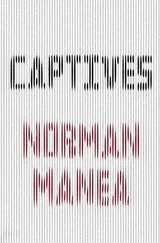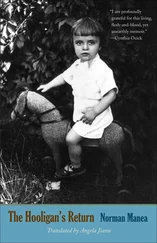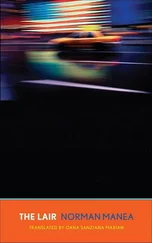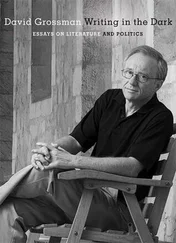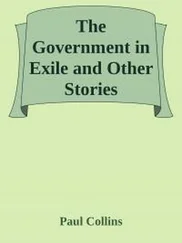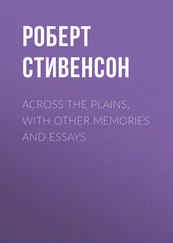The few trips I was allowed to take as a citizen of socialist Romania did, of course, have moments of rapture for me, novice that I was. Yet New York remained a dream, so foreign and distant that I never imagined I would have the chance to compare illusion with reality. My eventual escape to New York had nothing to do with tourism. Sudden terror before this omnipresent, all-devouring monster was soon overtaken by fascination.
The critic Irving Howe, a New Yorker of long standing, tried to temper my enthusiasm. “To enjoy this city you need a good apartment and a certain salary.” I was living in a miserable hotel in a rundown neighborhood, consumed with a newcomer’s neurotic insecurity. Yet I found everything irresistible: the city’s rhythms and colors, its contrasts and surprises. That Walt Whitman and Mark Twain, Herman Melville, Henry James, and John Dos Passos had lived here, that Enescu, Brancusi, or Eugen Ionescu had been successful here in no way raised my hopes.
Life in and with this city was hypnotic as a drug. Over the last seventeen years this addiction was established through daily negotiations with life’s routine. New York’s metabolism filled me with its energy and its toxins.
Although I felt that I, an exile in the land of exiles, belonged even more to a world to which no one can really be said to belong, on September 11, 2001, I was finally able to proclaim, “I am a New Yorker,” just as President Kennedy had declared himself a Berliner when that former National Socialist capital was in danger of being invaded by militant communists.
The Old Testament tells how work on the tower in Shinar, in ancient Babylon, was disrupted because man aspired to reach the heavens and divinity. Suddenly the builders could no longer understand each other. Different languages divided them. In present-day Babylon in Chinatown, in Little Italy, in Russian Brighton Beach, and in the alleys and byways of New York, all the world’s languages are spoken. The builders of the Twin Towers, whatever their native tongues, wanted to be Americans, citizens of the New World, the towers they built symbolizing the stature of freedom.
The attack on the towers of Babel was unexpected but not unpredictable insofar as it represented the hatred of Allah’s fanatical followers for the symbols of modernity. In the World Trade Center, human creativity and collaboration were universally codified. Of course, the building lacked poetry. Yet the towers could still have been a symbol of worldwide poetry, not commerce. As the Surrealist poet André Breton said, “It is above all our differences that unite us.”
Surprisingly, for such an extensive, cynically efficient cluster of humanity, the city displayed surprising civility and solidarity during and after the attacks. It immediately regained its strength, its sense of humor, and its industriousness. After September 11, 2001, skyscrapers, clubs, and restaurants of all kinds sprang up like mushrooms, with almost more vitality than before. Moreover, the city refused to give its votes to a president who exploited its disaster for political gain.
Romania is often called the Land of Dada, not because one of its sons, Tristan Tzara, was a founder of Surrealism, but because of the absurdity and paradoxes of its daily life, particularly in its politics. In exile, I immediately identified with another capital of Dada, the “cosmic republic, that speaks all languages in a universal dialect,” as Johannes Baader put it. Here, the old and the new are accomplices in celebrating life “in all its incomprehensibility”—exactly the subversiveness that the Dadaists loved.
A famous map painted by my friend and compatriot Saul Steinberg depicts the global village as seen from Manhattan: The distance from the Hudson River to the Pacific Ocean is the same as the distance from Ninth to Tenth Avenue on the Upper West Side, and somewhere beyond the calm ocean float Russia, China, and Japan. Saul’s other maps evoke his past: Milan, the city of his youth; Zurich, where Dada got its explosive start; and the Romanian city Buz  u, where he was born. (See “Made in Romania,” above, pp. 176–186, for my essay on Saul Steinberg.)
u, where he was born. (See “Made in Romania,” above, pp. 176–186, for my essay on Saul Steinberg.)
A map of my own fate would encompass Bukovina as my native land, the Transnistrian concentration camp of my childhood, the communist labor camp Periprava, where my father’s identity was altered, the Bucharest of my student years and my adulthood, Berlin, my exile’s starting point, and finally New York, where my exile found its residence. This fate is its own “Babel,” a confused mixture of memories and places.
Here on the Upper West Side, in the middle of a triangle formed by Central Park, Lincoln Center, and the Hudson River, I was once in the habit of beginning each day with an exotic act of devotion, a ritual of humility. I now had a good apartment and a certain salary, so Irving Howe’s conditions for life in the city were fulfilled. From my window, I washed the Rubbish Gangster: shaven head, bull neck, and swollen nose, from which dangled mucus-encrusted strands of hair, his short arms bursting with criminal power. Every day, at the same hour, he appeared with his metal trunk stuffed with all that he had collected from street-corner garbage cans; it was as if he wanted to ensnare me with his street sorcery so that I could see the city’s unfathomable contrasts.
The writer, caught up in the shelter of solitude, does not have much time to wander about. His neighborhood is his world, the geography of his calendar. Luckily, the streets of New York offer extraordinary spectacles wherever one is. In the Bronx or in SoHo, in Washington Square or Times Square, in front of the New York Public Library or near a hot-dog stand, across all the planets’ races, the banal vies with the exceptional for one’s attention. All faces, ages, and events, sooner or later, can be found here.
Routine increases banality and thoughtlessness; the personal disappears. You pursue your business here as only New Yorkers can, but every once in a while you look up and wonder, “How did I get here?” Or, rather, “How on earth did mankind come so far?”
I often look at New York’s architecture as if looking at an art book. On my way home from Bard College, in Annandale, where I teach, I am greeted by the George Washington Bridge majestically suspended over the Hudson River. It is a glorious welcome, even in fog.
The same is true of the skyline. Approach the city and you see the urban center of the world — a hard and harried place, marked by social contrasts as dizzying as its skyscrapers and with a sense of transience as elevated as its buildings. Its workforce labors round the clock and its inventiveness, energy, and diversity counter provincialism with scorn. Like America itself, although so utterly different, New York can only be comprehended “synthetically.” This festively incoherent capital of Dada is a spectacular fusion of freedom and pragmatism. Misery and magnificence, seduction and neurosis create and recreate the dynamic, unmistakable spectrum of New York life.
In this city you learn to limit yourself. It is impossible to take in all at once the innumerable symphonic or jazz concerts, or parades celebrating ethnic or sexual minorities. You can’t attend all the lectures, panel discussions, and auctions where everyday dramas and dreams are bartered. You can’t sit in all the taxis driven by these loquacious ambassadors from India and Russia and Haiti, from Pakistan and Ghana and Guatemala. At best you can grab a mere crumb of this frenetic global kaleidoscope. In the end, in New York you own nothing more than the instant, the now, the right now.
Again, I look over Central Park. “Dada covers things with an artificial tenderness,” wrote Tzara. “It is snowing butterflies that have escaped from a prophet’s head.”
Читать дальше
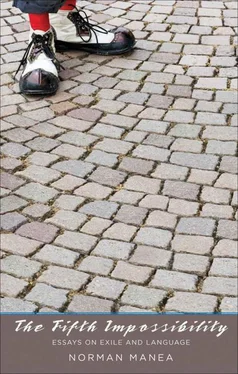
 u, where he was born. (See “Made in Romania,” above, pp. 176–186, for my essay on Saul Steinberg.)
u, where he was born. (See “Made in Romania,” above, pp. 176–186, for my essay on Saul Steinberg.)